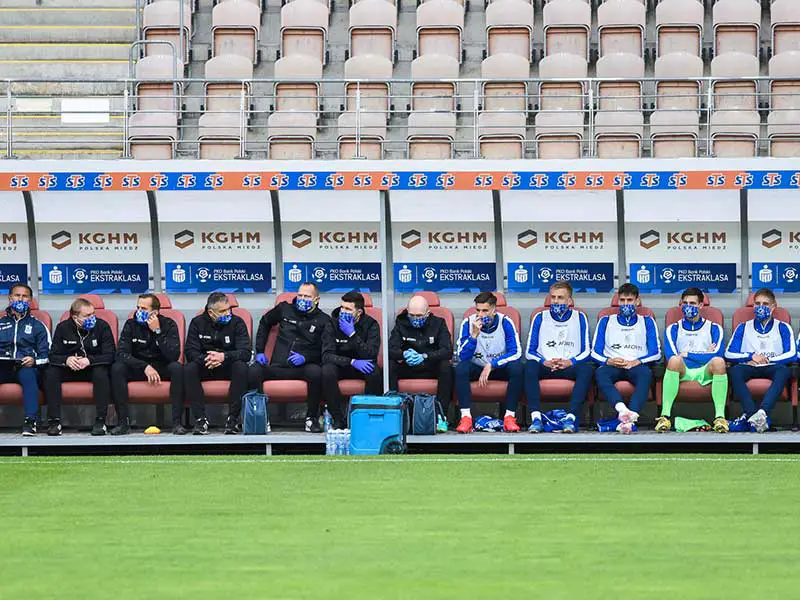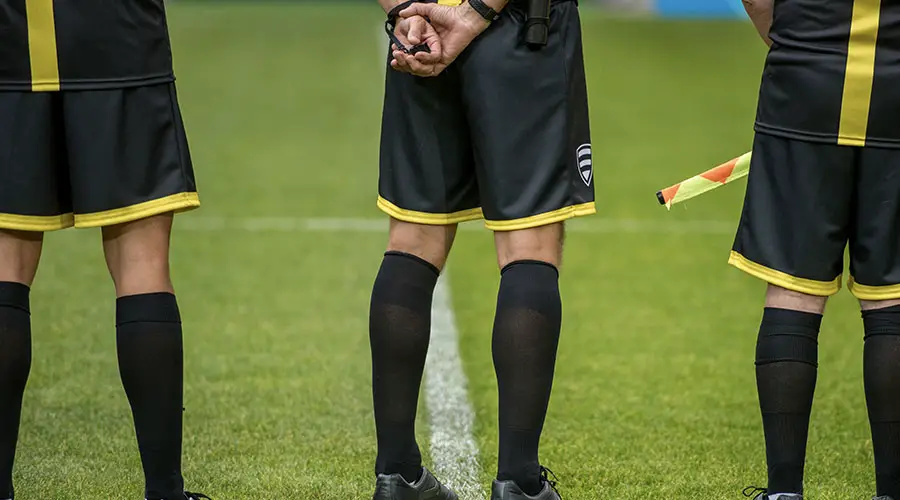How Many Substitutions Are Allowed In Soccer?
Today’s elite soccer leagues around the world allow up to five substitutions per team in each match. But as recently as the 1950s substitutes were unheard of. This article outlines the history of substitutions and explains the reasons for this increase, showing how the laws of soccer have changed to adapt as the game itself has evolved.
The interchange, or substitution, of players during a game of soccer has been a regular feature of the sport since the late-1950s. In this article, we explain why the need for substitutes came about, and how the laws of soccer governing their use have changed since then.
The rule allowing a team to bring on another player to replace one from the starting line-up during the course of a match was introduced in 1958, although a version of this rule had been trialed before then, including at the 1954 World Cup finals. The only exception to this ‘one substitute’ rule was if a goalkeeper was injured and needed to be replaced.
Why Were Substitutes Introduced In Soccer?
In its early days, soccer was played at a reasonably sedate pace, as players took their time to try to score goals using their superior skill with the ball over their opponents.
But over time, the sport became more about athleticism and power, and faster players were seen as a key component of every team. Of course, constant running over the course of a 90-minute football match will take its toll on even the most athletic players, and while players at the highest level of the game would – and still do – increase their levels of fitness to enable them to cope with the demands of the game on their body, even the fittest lose their effectiveness over the course of a match.

Of course, there was also the matter of players being injured during a game, however accidentally, and eventually, this became such a problem that teams had no choice but to finish games one player – or even more – short of a full team. Indeed, the problem of teams having no replacements for injured colleagues became so acute that even games as prestigious as F.A. Cup finals had been marred by teams having to play short-handed because of injuries.
A trial of player substitutions was held in the 1954 World Cup qualifying tournament, organized by F.I.F.A., but even at this elite level, it was only in 1970 when substitutes were finally allowed in every game.
And right up until 1967, it was stipulated that a player could only be substituted if he was injured once they had been allowed at a national league level in England and Scotland.
It was another 20 years after this until a second substitute was allowed, including for the first time a goalkeeper.
When Are Teams Allowed To Make A Substitution?
In theory, a substitute can be brought onto the field at any time during a game. But so that the match referee and assistant referees keep control of the match, they have to take place at a time when play is stopped. The most common examples are before a throw-in, corner, free kick, goal kick or even a penalty kick are taken. Sometimes, if a player has clearly been hurt during a game – possibly as a result of a foul – and is immobile on the pitch, a team will deliberately kick the ball out of play, so that the injured player can get medical attention and, if necessary, be substituted while play is still stopped.
Substitutions can also be made before or during a period of injury time although again, this period of time can then be extended at the referee’s discretion.
Most substitutions, however, take place during the later stages of a game, when players start to tire, because this is the time when an injury can have more serious consequences, with fatigue often contributing to making the damage to the player worse. So if a player is seen to have shown signs of tiring particularly badly, the coaching team will probably want to substitute that player to protect them.
Why Might A Soccer Team Manager Want To Make A Substitution?
Many opportunities might present themselves as a soccer match goes on were introducing a substitute could change the course of a game – and this is what most coaches are ultimately trying to achieve when they decide on their substitutions.
Among the most common reasons for a team needing to substitute a player is because of an injury, especially if the manager has another player at his disposal who could be equally effective in the injured player’s position.
A manager could also want to make a change for tactical reasons. For example, if a team is losing a match, they might want to change their team’s formation and use an extra forward, who could replace a more defensive player. Or vice-versa, a team holding a lead towards the end of a match could take off an attacker, and substitute him with a defender, to try to prevent the opposition from scoring.
One unusual situation in which a team might make a substitution is if there is a good chance of a game being decided by penalty kicks.
This happens in many competitions, when the scores are level, either at the end of the 90 minutes of the game, or extra time, if that is allowed under the rules of the tournament. A manager may want to take off one of their players and replace them with someone with a good record of scoring from penalties. But this will only be allowed if the team has not already made the maximum number of substitutions permitted.
As you can see, not all substitutions will be made out of necessity, or even for strict tactical reasons. Often, in the heat of a game, a player will be given a booking by the referee – commonly called a yellow card – and his manager will then not want to risk that player getting a red card, and as a result, his team having a one-player numerical disadvantage. So the player will be substituted to remove the risk of this happening.
Another factor a team will consider when planning substitutions is that it can be a good way of using up some of the time left to play in a game. While the referee is supposed to add on all the time taken up by a substitution, and include it in the stoppage time which they allow at the end of each half of a game, in practice it can be difficult for a referee to judge this time exactly, so he may choose to overlook such an interruption, which could work in a team’s favor, for instance, if they are leading in a game. So making a substitution becomes in this way a creative way of a team using up time, without ever likely of being penalized for time-wasting.
Why Has The Number Of Substitutions Allowed Increased So Much?
One big reason is because of pressure from team officials who were starting to lose so many players to injury. Even when one substitute was allowed, players often had to continue to play after being hurt during a game. This problem started to become so acute that many players were being forced to retire from soccer prematurely because they were under constant pressure to play. And when they suffered an injury, their recovery time was often shortened, because, with a squad of 15 or 16 players, there was great pressure for them to be ready to play again as early as they could.
However, since the rules were eased to allow a second substitute to take to the field, in 1987, this has proved the precursor of regular relaxations of the rules. Now, in the English Premier League and most other comparable elite leagues around the world, a team can name as many as seven substitutes for a game, of whom up to three are allowed to be used.
Some fans argue that this adds a new dimension to the game, in that a manager has to be able to use these far greater resources wisely, changing around his team line-up – and those on his substitutes’ bench – according to the type and quality of the opposition in each game, and bringing in the most suitable replacements which might have the most positive effect on the result of a game.
A further change came into the game at an elite level around the world in 2020 as a result of the COVID-19 pandemic, when the International Football Association Board temporarily relaxed the rules to allow all teams in the Premier League, English Football League, and other professional leagues around the world to make up to five substitutions per game.
However, this rule was only intended as temporary, and the maximum number of subs was due to return to three per team at the end of 2022.
So from being a last resort to help ensure that a soccer match could compete fairly, substitutions have become a vital part of helping a team become successful, as well as encouraging them to give younger players a chance to become integrated into a team and start to make a name for themselves.

